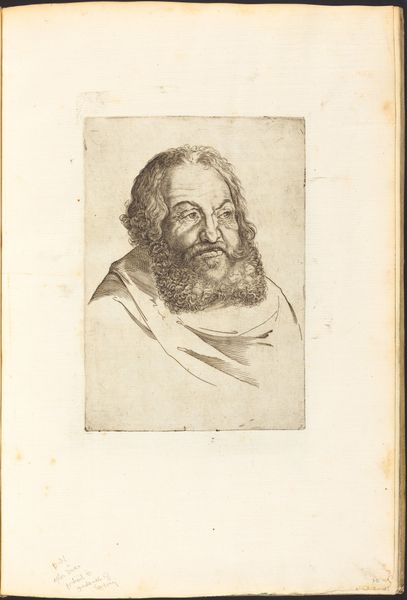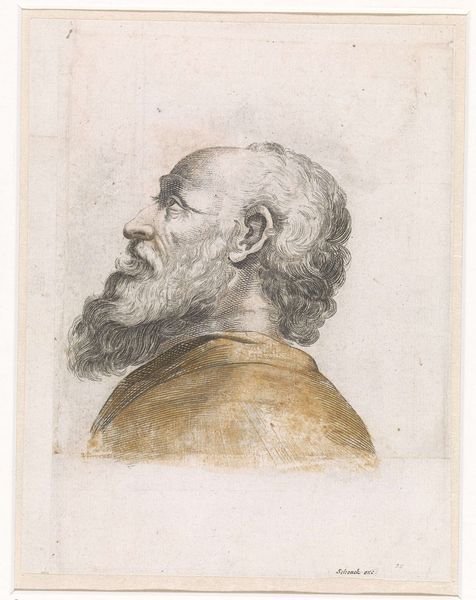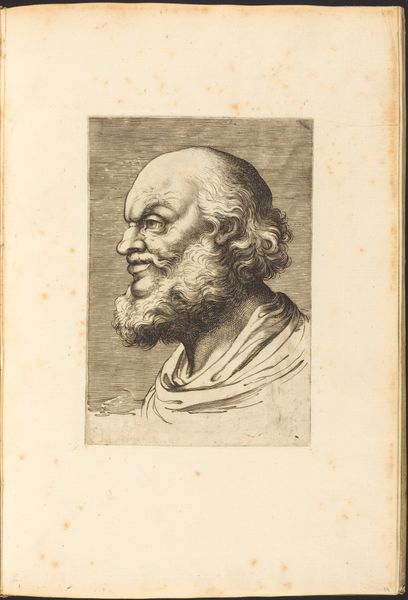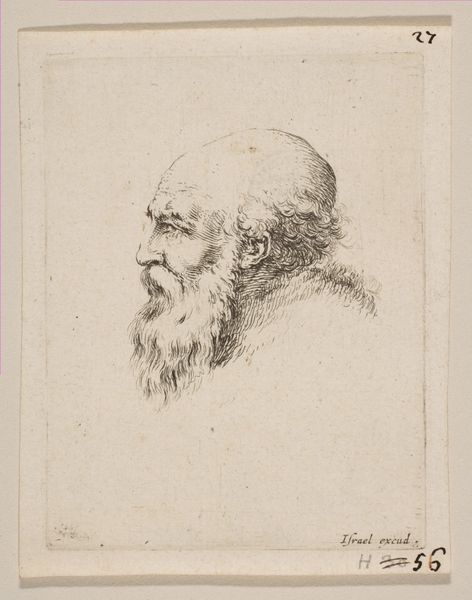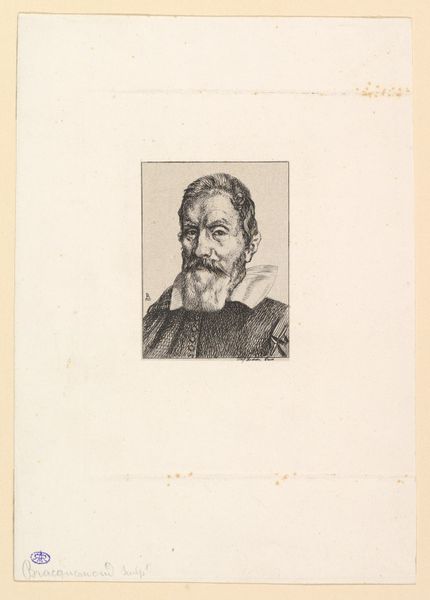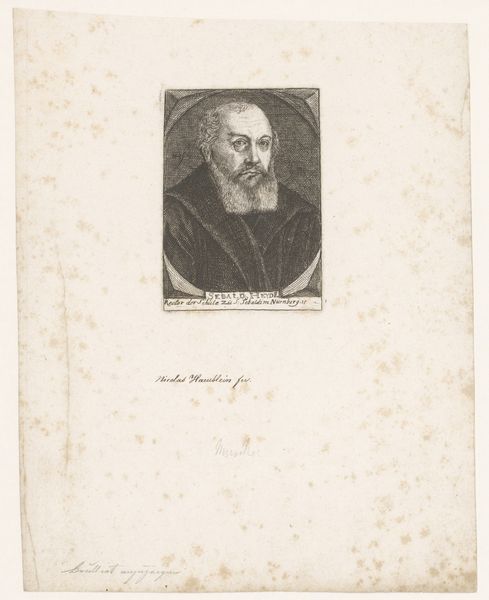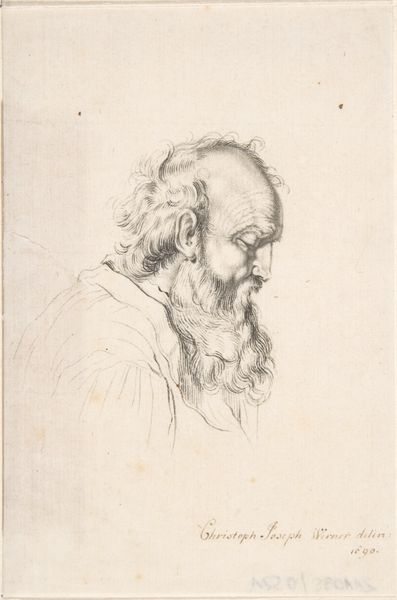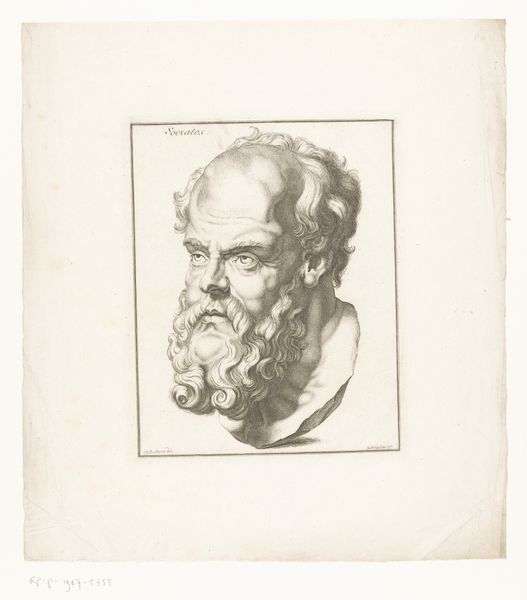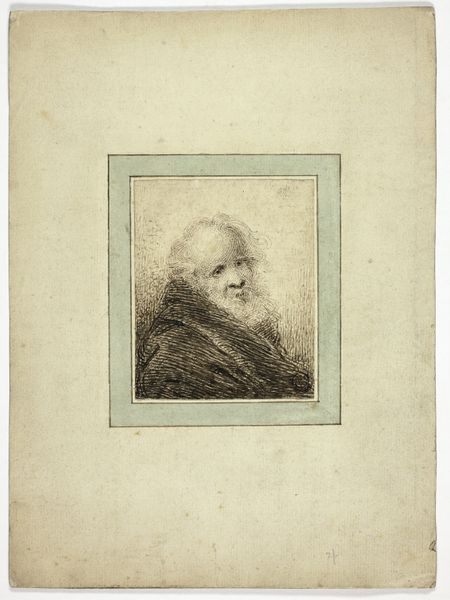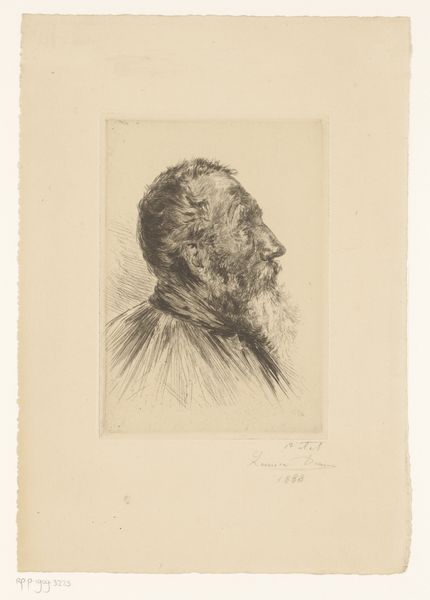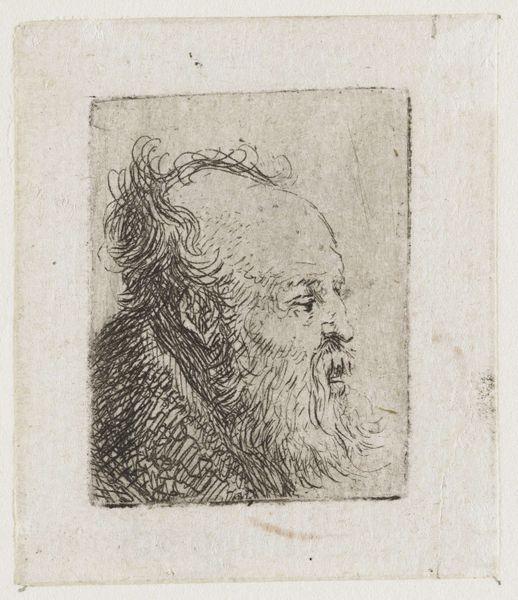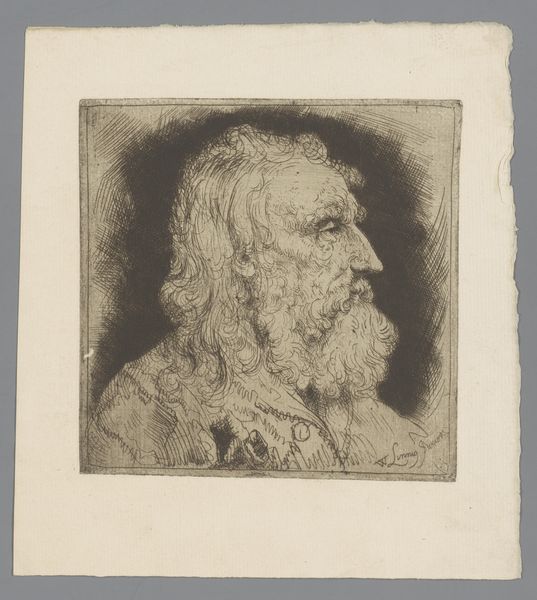
drawing, print, paper, ink, engraving
#
portrait
#
drawing
# print
#
paper
#
ink
#
history-painting
#
italian-renaissance
#
engraving
Copyright: National Gallery of Art: CC0 1.0
Curator: This ink drawing, now a print from a drawing book dating back to the early 17th century, around 1610-1620, is attributed to Luca Ciamberlano. It showcases an impressive example of engraving on paper. What strikes you immediately about the piece? Editor: The immediate feeling is one of contemplative gravitas. The man’s gaze, directed upwards and slightly out of frame, creates a sense of reaching for something beyond the immediate. The careful articulation of line and shadow in his beard and hair add to this mood, wouldn’t you agree? Curator: Absolutely. But let's also consider the socio-historical backdrop. Ciamberlano was working in a time of Counter-Reformation, where art was often deployed as a tool for ideological reinforcement. Who exactly this man is supposed to be and what narratives surrounding male authority and wisdom were the artist trying to evoke at the time? The beard itself is symbolic— Editor: Indeed. Symbolism aside, the etching technique is beautifully controlled. Notice the varying thicknesses and densities of the lines? They modulate across the form to render the subtleties of the face. I also find it interesting how little background there is. This isolation intensifies the focus on his profile, don't you think? Curator: Certainly. The Italian Renaissance context would highlight an individual's value and contributions to society; think, then, of representations of men as rulers, philosophers, theologians or poets that served to perpetuate systems of hierarchy that excluded most from positions of power and social mobility. Editor: Right. But from a compositional perspective, this concentrated presentation forces a reading from top to bottom, the gaze traveling from forehead down the length of the beard and back up the throat. A brilliant visual anchor, in effect, is achieved in that beard. Curator: I concur. Ultimately, in today's context, engaging with images like these requires a sensitivity to these earlier formulations. I leave with a greater understanding about the past, even as the art brings with it some disquiet. Editor: Yes, there is value in the balance you offer. I now feel it's much more than just skillful use of line. It speaks of human condition across the epochs.
Comments
No comments
Be the first to comment and join the conversation on the ultimate creative platform.
